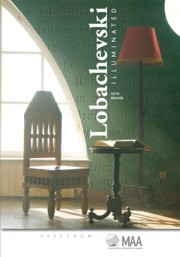Book contents
- Frontmatter
- Contents
- Introduction
- Note to the Reader
- Acknowledgements
- Theory of Parallels — Lobachevski's Introduction
- Theory of Parallels — Preliminary Theorems (1–15)
- Theory of Parallels 16: The Definition of Parallelism
- Theory of Parallels 17: Parallelism is Well-Defined
- Theory of Parallels 18: Parallelism is Symmetric
- Theory of Parallels 19: The Saccheri-Legendre Theorem
- Theory of Parallels 20: The Three Musketeers Theorem
- Theory of Parallels 21: A Little Lemma
- Theory of Parallels 22: Common Perpendiculars
- Theory of Parallels 23: The π-function
- Theory of Parallels 24: Convergence of Parallels
- Theory of Parallels 25: Parallelism is Transitive
- Theory of Parallels 26: Spherical Triangles
- Theory of Parallels 27: Solid Angles
- Theory of Parallels 28: The Prism Theorem
- Theory of Parallels 29: Circumcircles or Lack Thereof (Part I)
- Theory of Parallels 30: Circumcircles or Lack Thereof (Part II)
- Theory of Parallels 31: The Horocycle Defined
- Theory of Parallels 32: The Horocycle as a Limit-Circle
- Theory of Parallels 33: Concentric Horocycles
- Theory of Parallels 34: The Horosphere
- Theory of Parallels 35: Spherical Trigonometry
- Theory of Parallels 36: The Fundamental Formula
- Theory of Parallels 37: Plane Trigonometry
- Bibliography
- Appendix: Nicolai Ivanovich Lobachevski's Theory of Parallels
- Index
- About the Author
Theory of Parallels — Lobachevski's Introduction
- Frontmatter
- Contents
- Introduction
- Note to the Reader
- Acknowledgements
- Theory of Parallels — Lobachevski's Introduction
- Theory of Parallels — Preliminary Theorems (1–15)
- Theory of Parallels 16: The Definition of Parallelism
- Theory of Parallels 17: Parallelism is Well-Defined
- Theory of Parallels 18: Parallelism is Symmetric
- Theory of Parallels 19: The Saccheri-Legendre Theorem
- Theory of Parallels 20: The Three Musketeers Theorem
- Theory of Parallels 21: A Little Lemma
- Theory of Parallels 22: Common Perpendiculars
- Theory of Parallels 23: The π-function
- Theory of Parallels 24: Convergence of Parallels
- Theory of Parallels 25: Parallelism is Transitive
- Theory of Parallels 26: Spherical Triangles
- Theory of Parallels 27: Solid Angles
- Theory of Parallels 28: The Prism Theorem
- Theory of Parallels 29: Circumcircles or Lack Thereof (Part I)
- Theory of Parallels 30: Circumcircles or Lack Thereof (Part II)
- Theory of Parallels 31: The Horocycle Defined
- Theory of Parallels 32: The Horocycle as a Limit-Circle
- Theory of Parallels 33: Concentric Horocycles
- Theory of Parallels 34: The Horosphere
- Theory of Parallels 35: Spherical Trigonometry
- Theory of Parallels 36: The Fundamental Formula
- Theory of Parallels 37: Plane Trigonometry
- Bibliography
- Appendix: Nicolai Ivanovich Lobachevski's Theory of Parallels
- Index
- About the Author
Summary
In geometry, I have identified several imperfections, which I hold responsible for the fact that this science, apart from its translation into analysis, has taken no step forward from the state in which it came to us from Euclid. I consider the following to be among these imperfections: vagueness in the basic notions of geometricmagnitudes, obscurity in the method and manner of representing the measurements of such magnitudes, and finally, the crucial gap in the theory of parallels. Until now, all mathematicians’ efforts to fill this gap have been fruitless. Legendre's labors in this area have contributed nothing. He was forced to abandon the one rigorous road, turn down aside path, and seek sanctuary in extraneous propositions, taking pains to present them—in fallacious arguments—as necessary axioms.
I published my first essay on the foundations of geometry in the “Kazan Messenger“ in the year 1829. Hoping to provide an essentially complete theory, I then undertook an exposition of the subject in its entirety, publishing my work in installments in the “Scholarly Journal of the University of Kazan” in the years 1836, 1837, and 1838, under the title, “New Principles of Geometry, with a Complete Theory of Parallels”. Perhaps it was the extent of this work that discouraged my countrymen from attending to its subject, which had ceased to be fashionable since Legendre. Be that as it may, I maintain that the theory of parallels should not forfeit its claim to the attentions of geometers. […]
- Type
- Chapter
- Information
- Lobachevski Illuminated , pp. 1 - 2Publisher: Mathematical Association of AmericaPrint publication year: 2011



